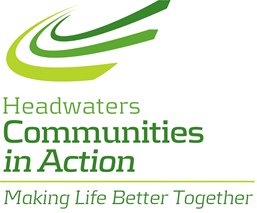Poverty
Is there Poverty in the Headwaters Community?
Is there poverty in the Headwaters Community? In a word, yes. Poverty in Headwaters exists but is often hidden. That is, in part, a reflection of the rural and small urban culture that takes pride in independence and an ability to take care of one’s own family. Residents tend to seek government assistance only after they have exhausted all other options1. Poverty describes those who are deprived of fully participating in the normal life of the community because their resources fall markedly behind the community norm. Although Canadians have not reached agreement on the definition of poverty or how to measure it, the so-called “low-income cut-off” measure is used as an indicator. However, it does not take into account the economic challenges of specific regions. Headwaters has a high number of very wealthy residents, skewing the median income to above the national average, but that median does not reflect the significant income disparity within the local population.
The Lighthouse is a faith-based organization in Orangeville that provides a safe place for those who are lonely or struggling to find food and friendship. Over the past two years, volunteers provided hot meals and friendship six days a week to approximately 50-75 people daily.
Participants in HCIA’s 2008 focus groups raised concern about the lack of public awareness of the issues faced by the most vulnerable in our community, in particular access to basic needs such as housing and food. Affordability of higher education, and access to public transportation and recreation were other areas of concern.
Affordable Housing Housing is essential to securing employment and access to services such as childcare, education and health care. Demand for affordable housing in both Dufferin and Caledon far exceeds availability. Those living on Ontario Works or Ontario Disability Support Pension are chronically at risk of eviction and homelessness because these sources of income are inadequate given the cost of living in Headwaters*.
* Communications with Dufferin County Community Services staff and A Home in the Hills: Homelessness and Precarious Housing in Caledon, March 2011
Homelessness
Homelessness exists in Dufferin and Caledon despite the relative affluence of the community. Shelters for youth, women and their children in Orangeville provide service to Dufferin and Caledon citizens. There are no shelters available for men or men with children. Both Dufferin and Caledon have undertaken Homelessness Prevention initiatives to better understand the extent of the problem and possible solutions.
- Family Transition Place provided shelter to 41 women and 23 children facing a housing crisis in 2010
- Choices Youth Shelter provided 2,088 total bed nights between January and October 2010
- Two “tent cities” are well populated during the summer months in Dufferin
- The OPP in Caledon have found people living in cars, ravines and abandoned dwellings
- Dufferin County has 255 subsidized public housing units with 540 households on a waiting list as of June 2011
- Caledon has 252 subsidized public housing units, with 1,680 applicants on a waiting list as of July 2011
- Dufferin has no subsidized seniors’ retirement homes
Food
- 15,600 meals a year on average are served by Good Friends Fellowship, The Lighthouse in Orangeville
- 1,660 food certificates were distributed and 150 individuals and families were provided food support by Caledon Community Services in 2010
- All food banks in Dufferin have seen dramatic increases in use between 2007 – 2009
Financial Support The numbers of people on employment insurance (EI) and Ontario Works (OW) have increased significantly since the economic recession in 2008. Yet, the full impact of the recession is yet to be realized as organizational and governmental programs that have buffered people who lost their jobs are just beginning to run out. Province wide, a 6% increase in Ontario Works claimants is anticipated from 2010 to 2011, and the Central West Region – which includes Dufferin and Caledon is expected to be among those communities with the highest increases. According to the Canadian Index of Well-being, it will probably take up to a decade for the increased poverty levels imposed by the recession to return to pre-recession levels.
- EI claimants increased by 266% (to 38,600 from 10,540) in Peel (includes Caledon), 279% (to 1,480 from 390) in Dufferin5, and 245% in Ontario from 2008 to 2009
- The number of Ontario Works claimants nearly doubled between 2008 to 2010 in Dufferin (to 509 from 343 cases) and Caledon (to 436 from 294 cases)
Families tend to leave Caledon and Dufferin once employment insurance benefits have been drained because the cost of living is prohibitive to families on income support programs, say employees at Caledon Community Services and Dufferin Community Services. Without adequate public transportation, affordable housing or shelters, people in crisis struggle to stay in their home town.
What do you think?
What does poverty mean to you, your family, and your neighbourhood? How can we work together to diminish it?
 Headwaters Communities in Action
Headwaters Communities in Action







